Philippa J. Benson and Susan C. Silver
Susan M. Bielstein
Wayne C. Booth, Gregory G. Colomb, Joseph M. Williams, Joseph Bizup, and William T. FitzGerald
Richard Eckersley, Richard Angstadt, Charles M. Ellertson, Richard Hendel, Naomi B. Pascal, and Anita Walker Scott
Bryan A. Garner
Nancy C. Mulvany
Walter W. Powell
Kate L. Turabian
What Editors Do
THE ART, CRAFT, AND BUSINESS OF BOOK EDITING
Edited by PETER GINNA
THE UNIVERSITY OF CHICAGO PRESS
Chicago and London
The University of Chicago Press, Chicago 60637
The University of Chicago Press, Ltd., London
2017 by The University of Chicago
All rights reserved. No part of this book may be used or reproduced in any manner whatsoever without written permission, except in the case of brief quotations in critical articles and reviews.
For more information, contact the University of Chicago Press, 1427 E. 60th St., Chicago, IL 60637.
Published 2017
Printed in the United States of America
27 26 25 24 23 22 21 20 19 18 1 2 3 4 5
ISBN-13: 978-0-226-29983-9 (cloth)
ISBN-13: 978-0-226-29997-6 (paper)
ISBN-13: 978-0-226-30003-0 (e-book)
DOI: https://doi.org/10.7208/chicago/9780226300030.001.0001
Library of Congress Cataloging-in-Publication Data
Names: Ginna, Peter, editor.
Title: What editors do : the art, craft, and business of book editing / edited by Peter Ginna.
Other titles: Chicago guides to writing, editing, and publishing.
Description: Chicago : The University of Chicago Press, 2017. | Series: Chicago guides to writing, editing, and publishing | Includes index.
Identifiers: LCCN 2017025411 | ISBN 9780226299839 (cloth : alk. paper) | ISBN 9780226299976 (pbk. : alk. paper) | ISBN 9780226300030 (e-book)
Subjects: LCSH: Editing. | Publishers and publishing.
Classification: LCC PN162 .W465 2017 | DDC 808.02/7dc23
LC record available at https://lccn.loc.gov/2017025411
 This paper meets the requirements of ANSI / NISO Z39.48-1992 (Permanence of Paper).
This paper meets the requirements of ANSI / NISO Z39.48-1992 (Permanence of Paper).
For Margaret Williams Ginna
and Robert Emmett Ginna Jr.
who coauthored, and edited, me
CONTENTS
THE THREE PHASES OF EDITING
People outside the book publishing industryand even many within itoften wonder: just what is it that editors do? Its a simple question with a complicated answer. This book attempts such an answer. Its intended for readers who are interested in becoming editors themselves, or who have embarked on an editorial career and want to learn more; for those in other jobs within publishing who want to understand their editorial colleagues; for book lovers curious about how the books they loved (or hated) came into being; and not least, for writers who want to know just what goes on inside the walls of a publishing houseor inside an editors head. To find out how the literary sausage is made, for better or worse, read on.
In todays book business, the role of editor encompasses an enormous range of tasks. Imagine that the whole American publishing industry could be found on one single street. (So much of it was, in nineteenth-century New York, that the expression Publishers Row became a lasting metonym for the book business, as Madison Avenue did for advertising. Today publishing is more geographically dispersed than ever, but suppose the contrary with me for a moment.) If we could peek in the windows of all the different publishers, here are some of the things we might see editorial staffers doing:
In this skyscraper, an editor is on the phone with a literary agent negotiating a contract for a new book.
In the conference room next door, another editor is sitting with an author in front of a pile of photographs, choosing images for a book going into production.
In the hallway, a senior editor is buttonholing the sales director to tell him why he has got to read a memoir thats just been delivered.
In this ivy-clad building, a university press editor is scanning a new journal, looking out for promising young scholars.
Across the street, several editors are in a marketing meeting, discussing publicity and sales plans on next seasons titles.
In this cubicle, an editorial assistant is struggling to fit a flap copy description into the two hundred words allotted for it.
In this one, a copyeditor is checking to make sure that a character who has green eyes on page 60 of this manuscript didnt have blue eyes on page 14.
At the textbook publishers building on the corner, an editor is researching professors who might peer-review a new environmental studies reader.
In the brownstone housing an independent press, a fiction editor is painstakingly composing a letter asking a famous writer to blurb a debut novel.
Back at the skyscraper, in the corner office, the editor in chief is... actually shes not there, shes on her way to lunch. But this, too, is a very important part of her job! Ill discuss why in the next chapter.
What we probably wouldnt see through these office windows are editors editing thingsthat is, reading manuscripts and suggesting changes and improvements to them. Perhaps the kaleidoscope of other tasks listed above suggests why. Those essential editorial activities require concentration and long blocks of time to do properlyand thats near-impossible to find in the busy publishing workday. If we followed all these editors out of their offices at night, we would see almost every one, as they sit on the bus, or on the sofa after dinner, pull a computer tablet or a stack of pages out of their bag and start to read. And many of them are probably still reading and making comments in the margins deep into the evening.
WHAT EDITING IS
Its ironic that publishing, a business whose essence is words, has some of the loosest, most confusing, and most contradictory terminology of any industry I know. For instance, one very common term, galley, could refer to three or four different things.
As the list of activities above suggests, the title editor is misleading, too. What the word editing connotes to most peoplecorrecting and improving an authors textis only a part of what book editors do. Its a big slice of the pie, but far from the whole pizza. The Latin origin of edit, edere, meaning to bring out or to put forth, usefully expands our understanding of the role. Editors take the work of authors and put it before readers. Another word for that activity, of course, is publishing, and another instance of our fuzzy professional vocabulary is the overlap of editing and publishing. (In some languages

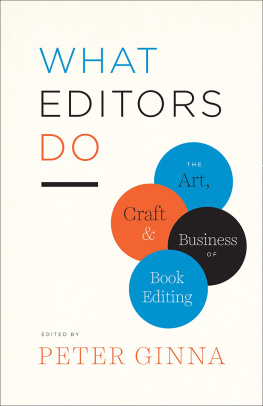
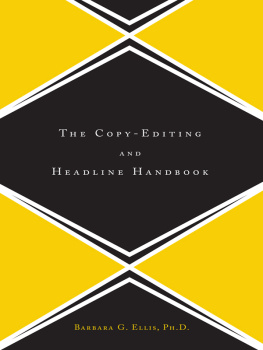

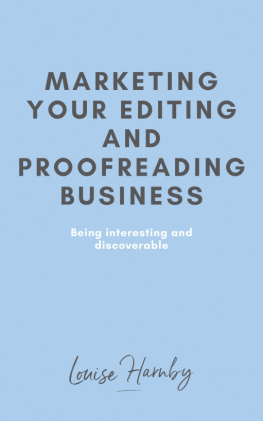
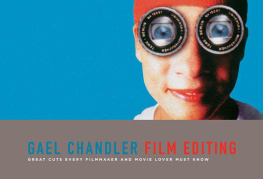
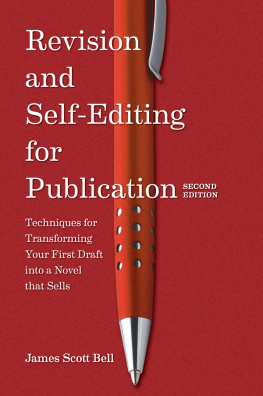
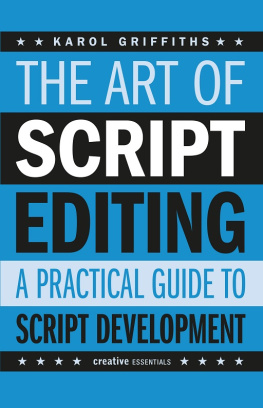
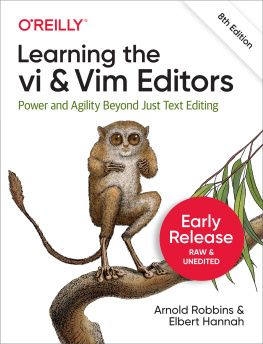
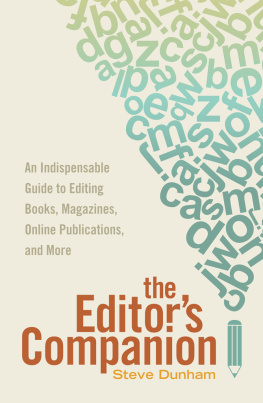
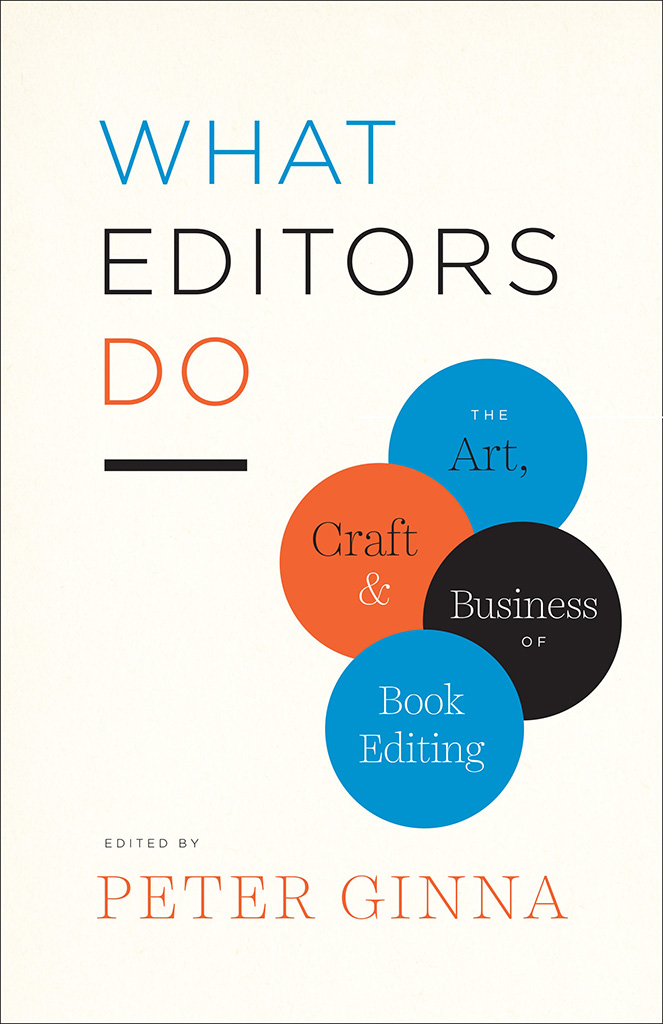
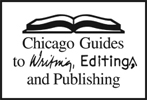
 This paper meets the requirements of ANSI / NISO Z39.48-1992 (Permanence of Paper).
This paper meets the requirements of ANSI / NISO Z39.48-1992 (Permanence of Paper).